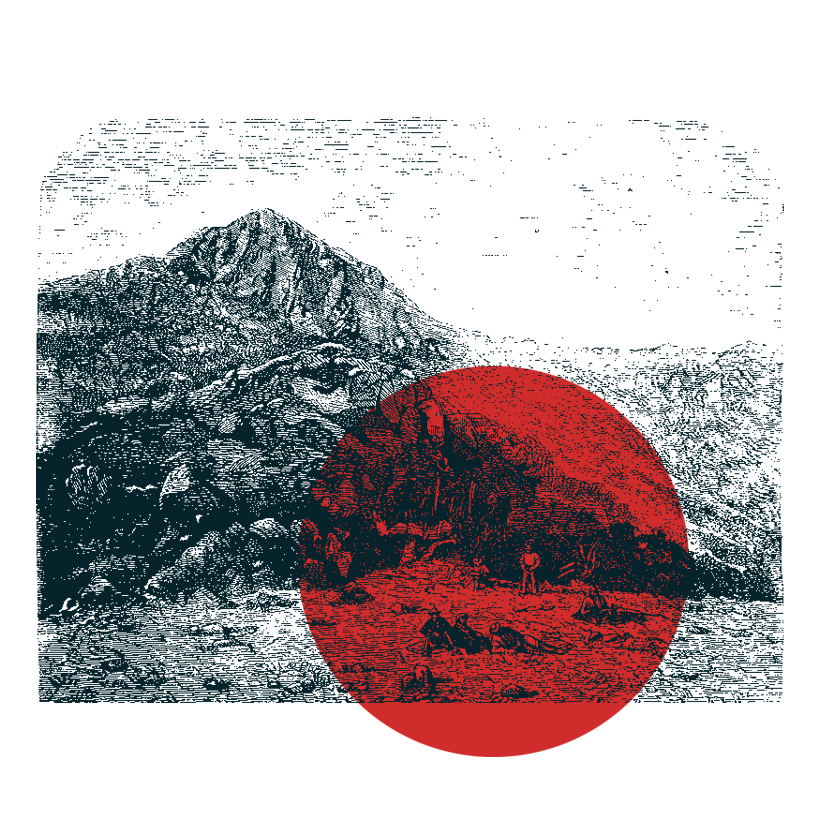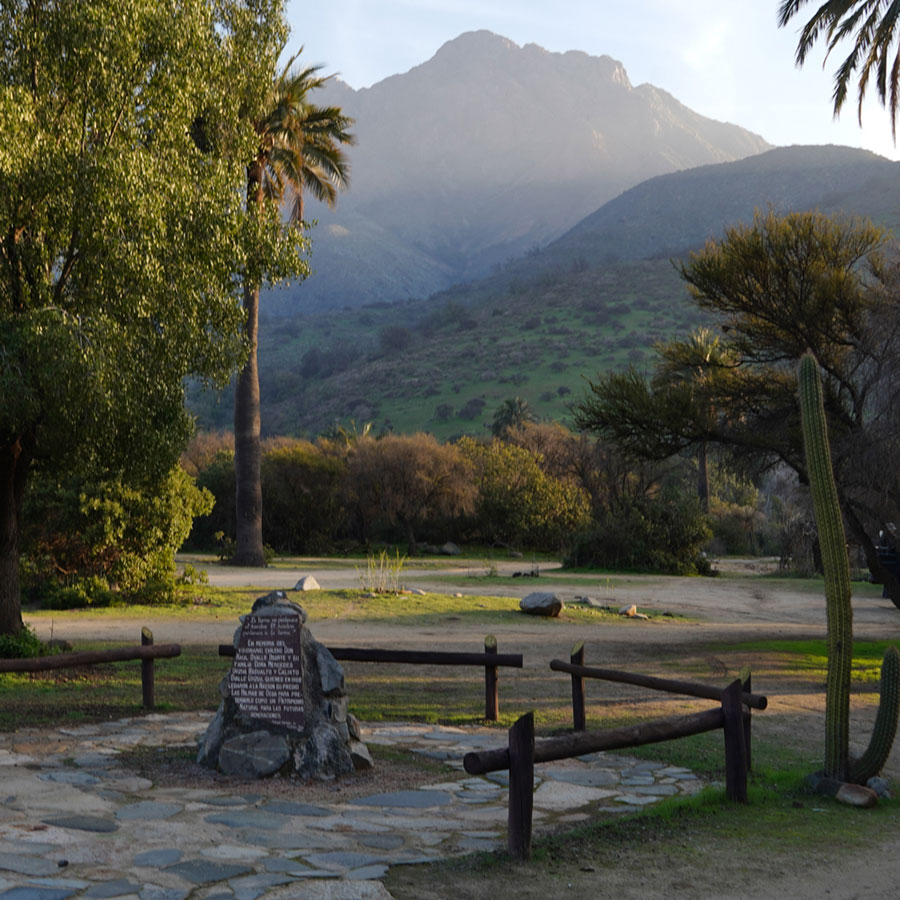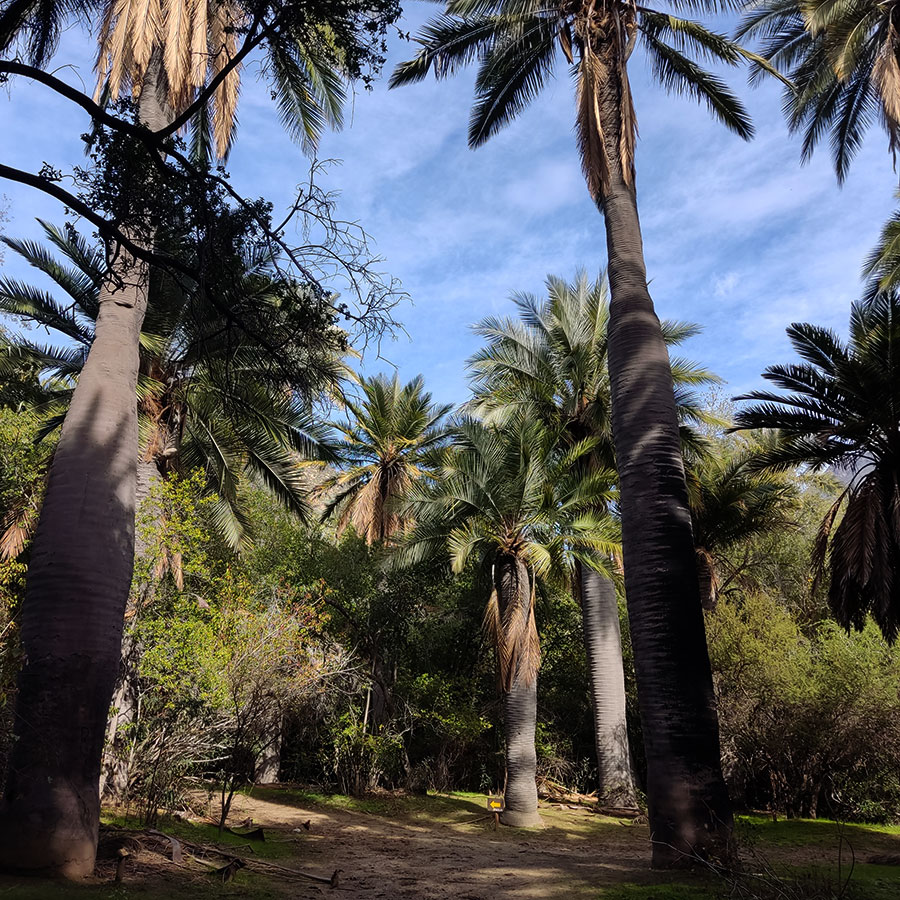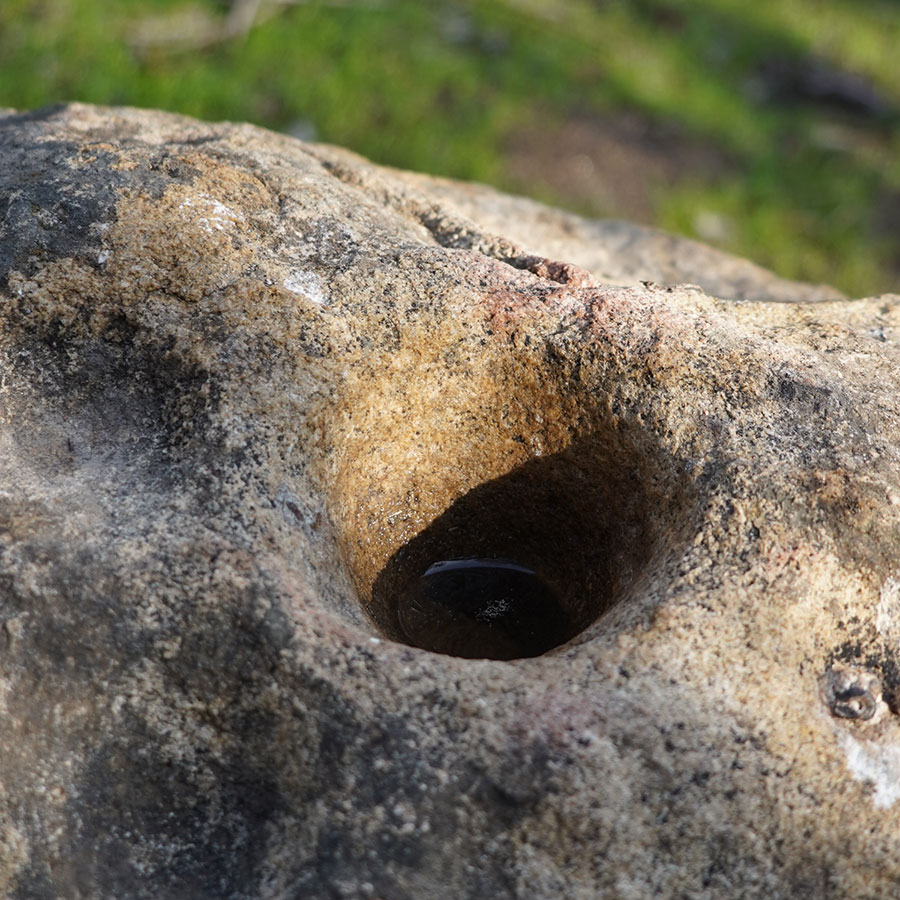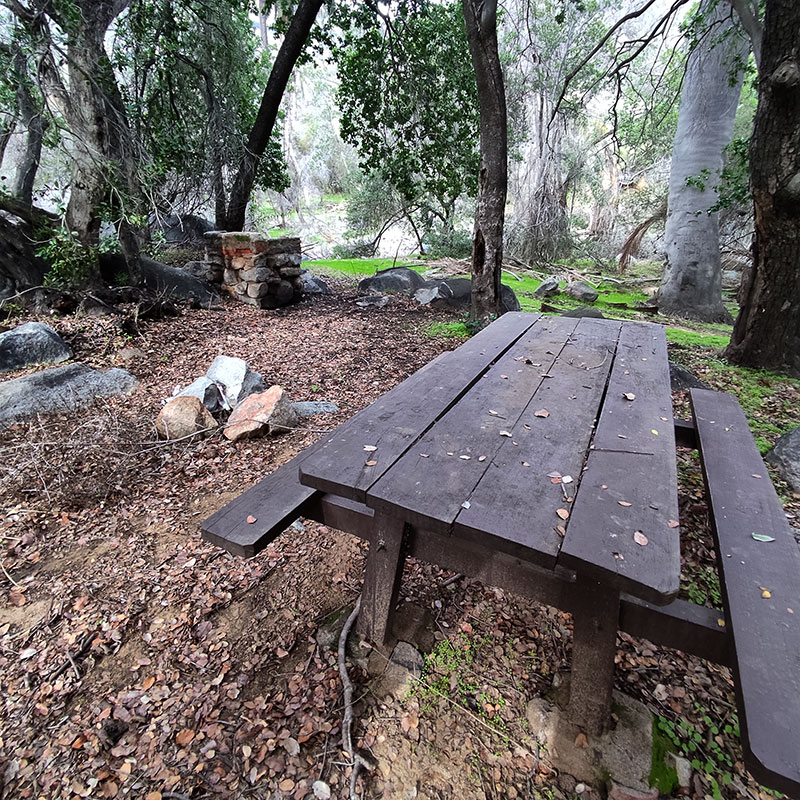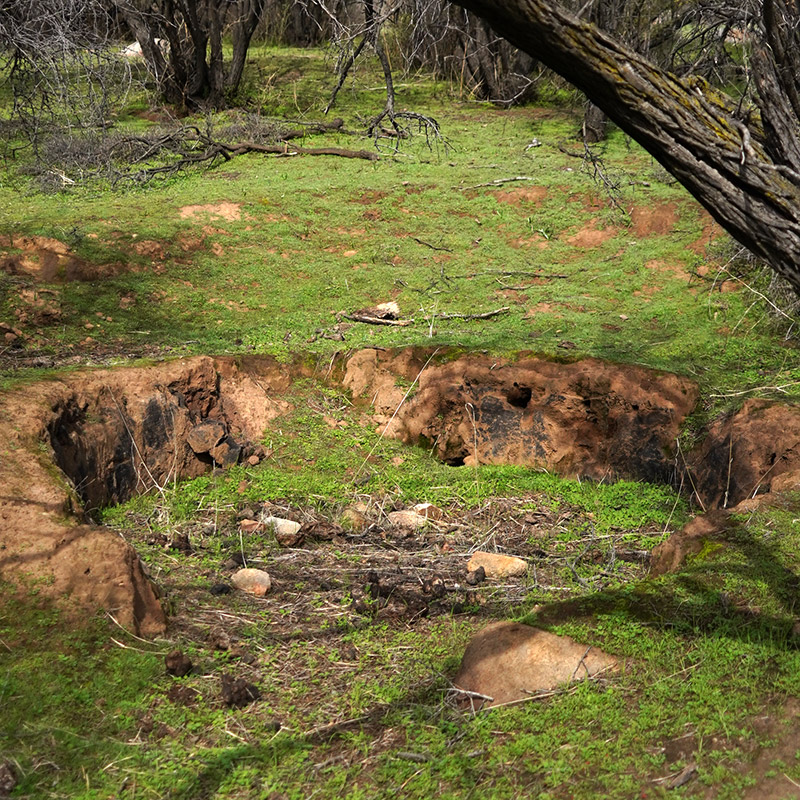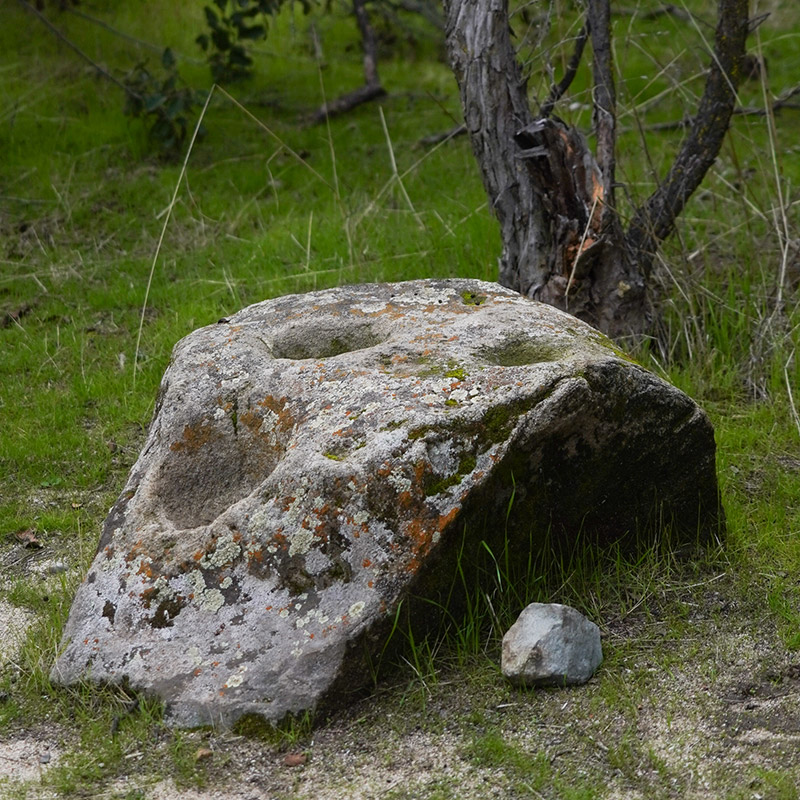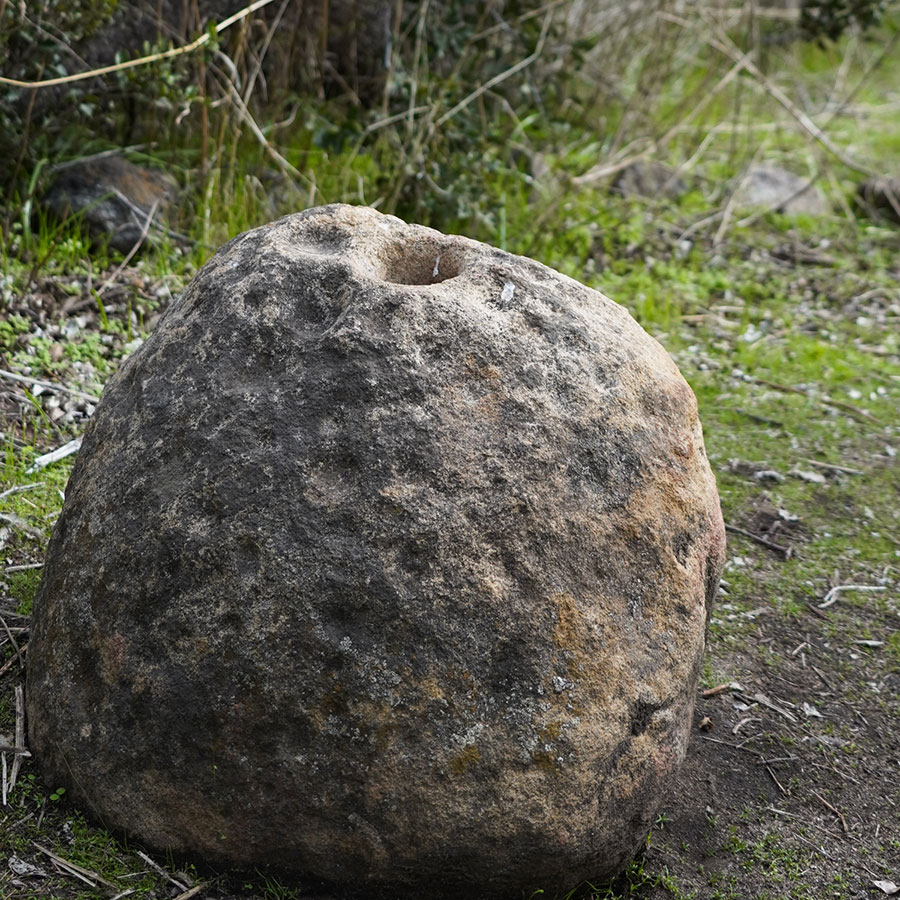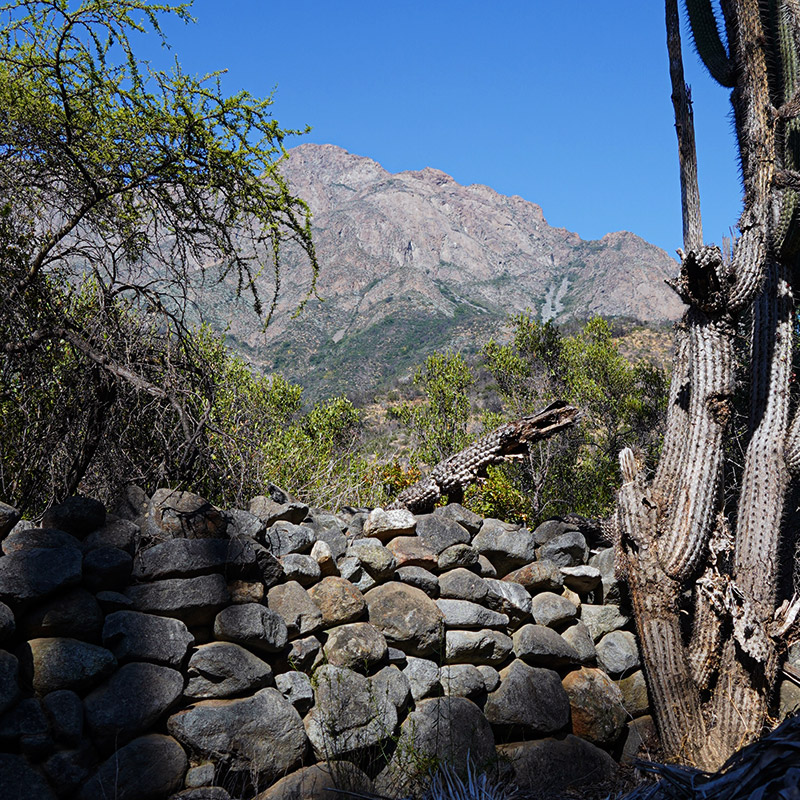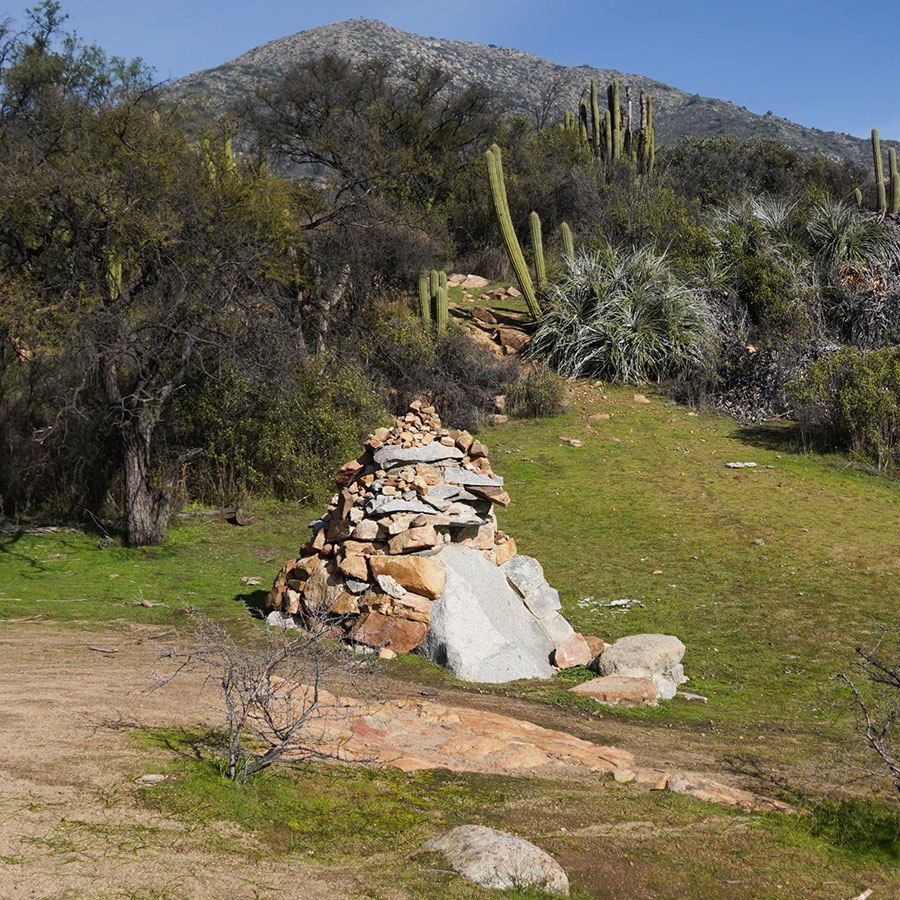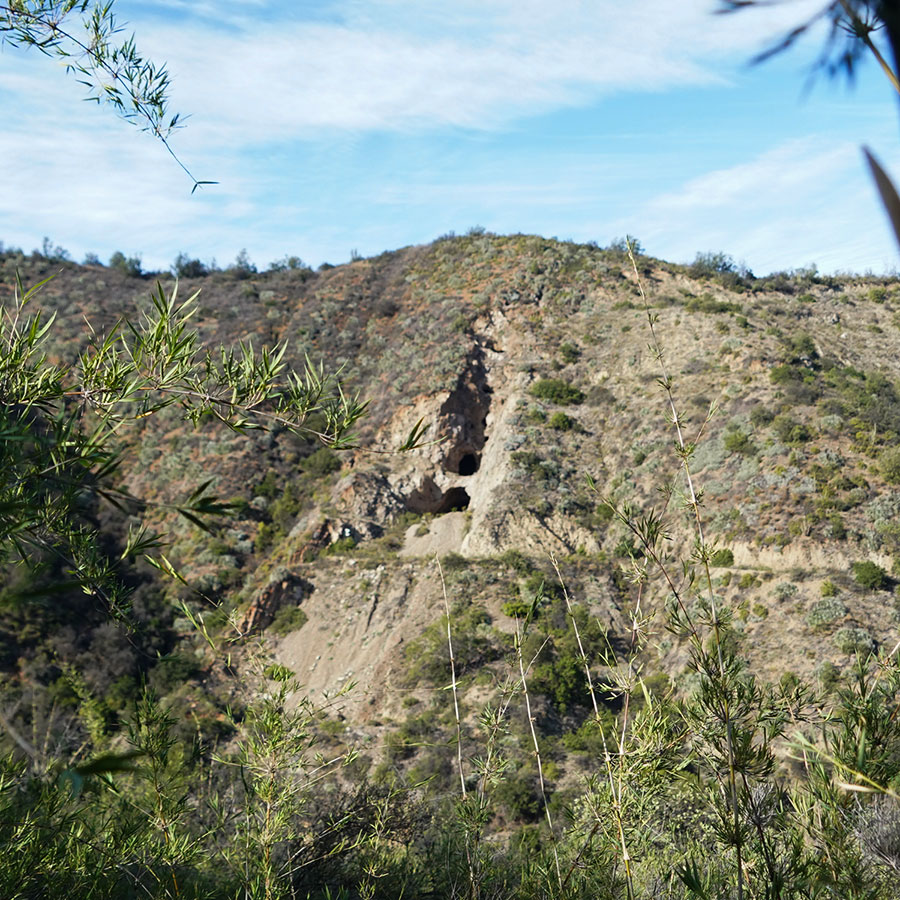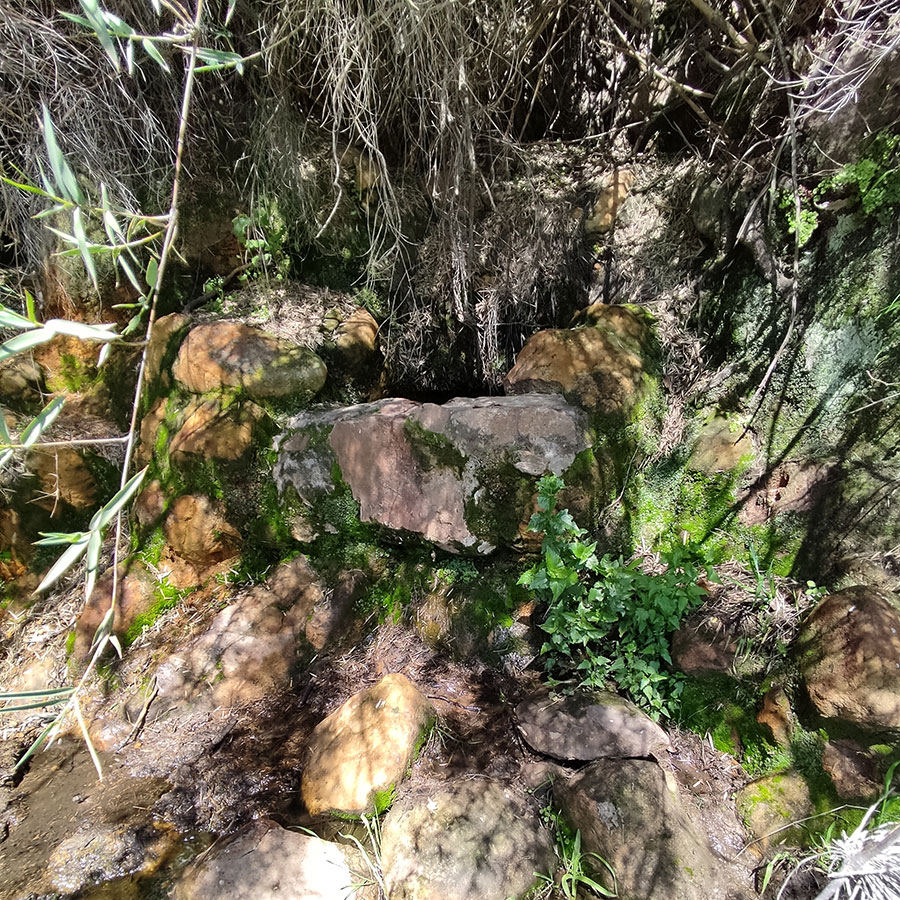Portezuelo
Granizo - Ocoa Crossing - Item N°9
We reach the summit line, the Portezuelo de Ocoa, the highest point of the journey, with a multiplied panoramic view.
The watershed, delimited by a stone wall in the form of a pirca, which also separates two properties of very different history and characteristics. Towards Granizo de Olmué, it was the Indian heirs of the encomendera Mariana de Osorio in the 17th century who organized themselves as comuneros. Towards Ocoa, an hacienda that belonged to the Jesuits in the 18th century, was after their expulsion, administered as a large estate that was subdivided into 5 parts at the end of the 19th century, one of which is the current Ocoa sector of the National Park.
To the north, we can see the Aconcagua valley and the transversal mountain ranges that accompany its course. On clear days we can see 144 km away the snow-capped peaks of Mount Mercedario, located in the province of San Juan, Argentina, which reaches an altitude of 6,770 meters above sea level.
To the south, the valley of the Limache Stream, whose waters originate in the Dormida canyon, at the foot of the Vizcacha and Punta Imán hills, running almost parallel to the Aconcagua, finally pours its waters into the Aconcagua only 8 km from its mouth.
On a regional scale, we are at a transition point between a Mediterranean-type climate and a semi-arid one. On a local scale, we pass from a shady climate, with a majority of south-facing slopes, to a sunny climate, with noth exposed slopes. The coastal fog loses the influx that we have analyzed so far, when we enter Granizo.
All these factors have important consequences on the diversity and distribution of the plant communities we are visiting. From the predominance of forest areas, we move on to areas with a predominance of sclerophyllous scrub.
Descending along the trail, the presence of the Chagualillo (Puya coerulea) stands out; a plant up to 2.5 meters high, elongated gray leaves, with a thorny margin gathered in inclined rosettes, which grows only in the coastal mountain range between 500 and 2,000 meters above sea level, between the regions of Coquimbo and Valparaiso.
It settles on granitic rocky substrates, facing steep hillsides, and then disappears below 1,000 meters above sea level.

